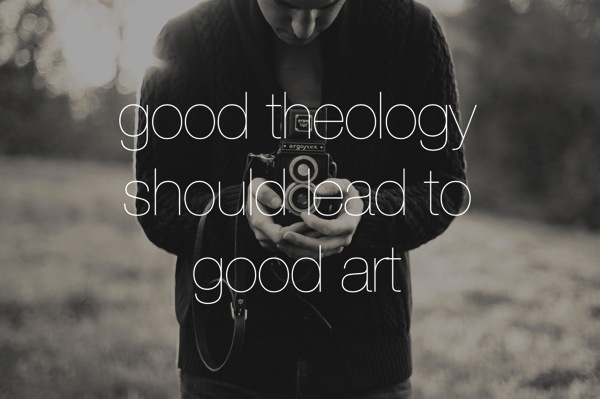 There was a day when the church was known for its artists. Da Vinci famously painted the Last Supper, Michaelangelo painted the Sistine Chapel, and J.S. Bach wrote music influenced by his Christian faith. In not quite as distant history, C.S. Lewis and J.R.R. Tolkien wrote classic works influenced by their Christian faith. Unfortunately, when we think of the church in today’s culture, we do not likely think of art. And this is not about the buildings; because although our building may no longer be painted or built the same way, our churches are still full of music, design, film, performance art, and writing.
There was a day when the church was known for its artists. Da Vinci famously painted the Last Supper, Michaelangelo painted the Sistine Chapel, and J.S. Bach wrote music influenced by his Christian faith. In not quite as distant history, C.S. Lewis and J.R.R. Tolkien wrote classic works influenced by their Christian faith. Unfortunately, when we think of the church in today’s culture, we do not likely think of art. And this is not about the buildings; because although our building may no longer be painted or built the same way, our churches are still full of music, design, film, performance art, and writing.
In the 21st century, art in the church tends to get associated with mediocre music, preachy films, or copycat designs.
This shouldn’t be. Our life-changing theology should lead to art that is not simply “Good for Christian art” but instead just “Good, period.” Christians should be making the best art, because we have the most compelling story to tell. Our theology clings to the divine story of redemption and that should inspire the best art.
The stories we tell.
Academia likes information and speaks to the mind. Art prefers a compelling story and speaks to the heart. And both of these are important. It is important that we are able to have a systematic theology and understand the complexities of our doctrine, but it is also important that our doctrines are interwined with the divine story.
A friend of mine said, “Stories are equipment for living.”
Stories help give words and life to the theology that we carry with us into everyday life. And since good theology is interested not simply in our Sunday mornings, but our Monday through Friday too, stories become deeply important. Good theology always has a story to tell.
The theologian C.F.W. Walther spoke of the doctrine of Law and Gospel as an artist when he said, "Rightly distinguishing the Law and the Gospel is the most difficult and the highest art of Christians in general and of theologians in particular. It is taught only by the Holy Spirit in the school of experience.”
This is fascinating, because Walther describes something that I’d never consider art as an art form. He somehow sees his pastoring as an art. Just as an artist decides which colors to use, which words to write, and which scenes to cut, so also the theologian has to determine which stories to tell, which words to say, and which scriptures to teach. The theologian will always be an artist because the theologian must be a story-teller.
So the question then becomes, is he a good one?
Is the theologian telling a compelling story when he re-tells the divine story? Is he showcasing this story with beautiful art? Is the preaching, writing, music, design, and film showcasing this same divine story? We are all theologians, we are all story-tellers, and the story we tell should inspire beautiful art.
And whether or not we see ourselves as artistic, our theology should absolutely inspire our desire to share the compelling story to those around us. And if we are sharing this story with those around us, we are artists. Because as artists, as we decide what to share from our own story and from the divine story, we are deciding what colors will go on the canvas and what colors will be left out in order to paint a picture of the God we know and love.
What’s your art?
